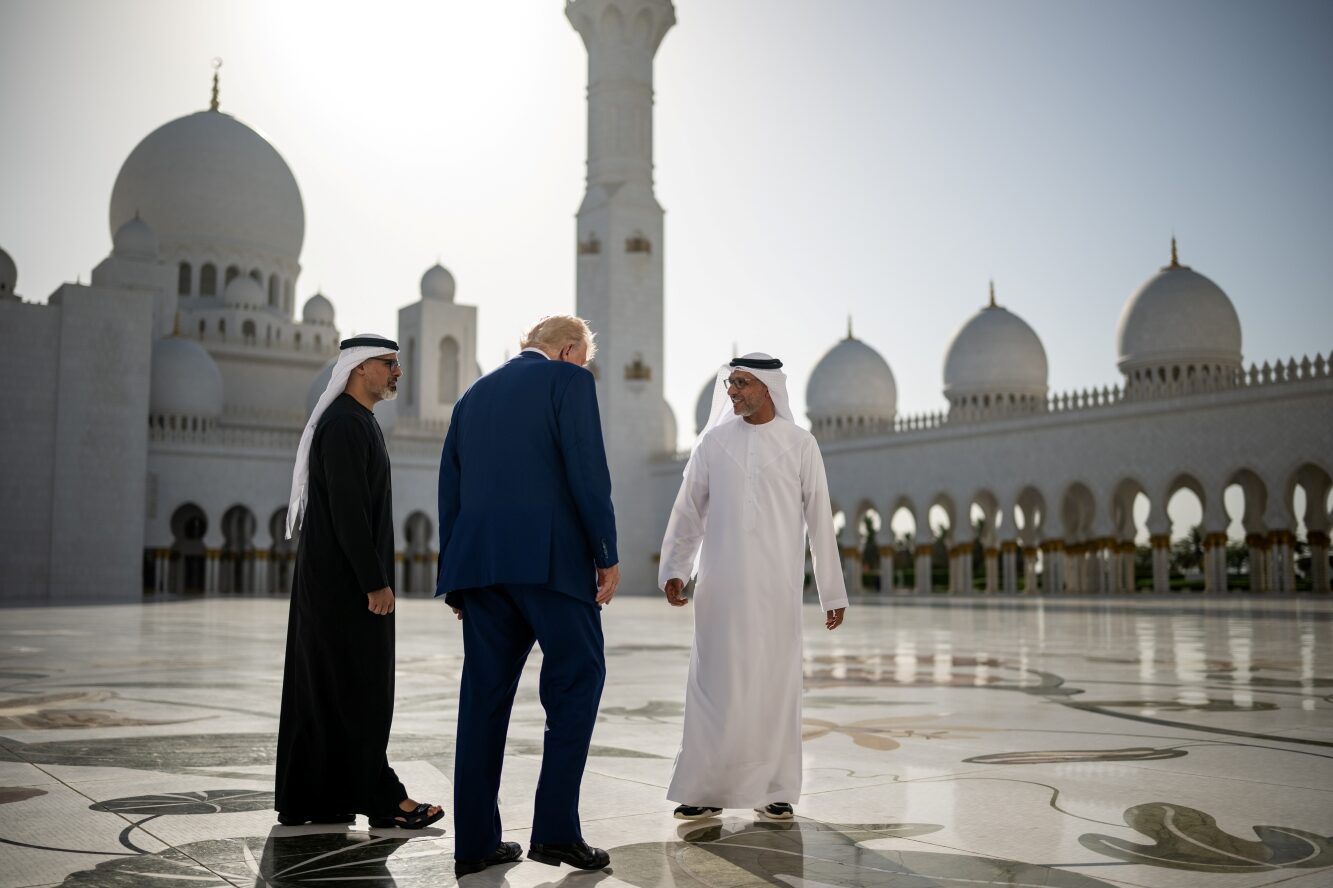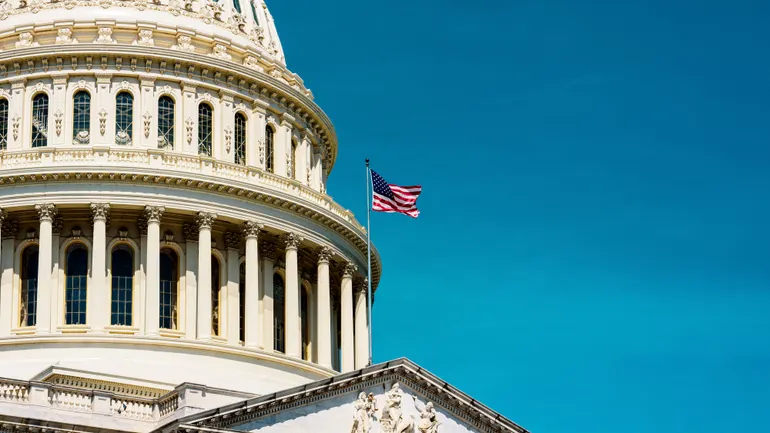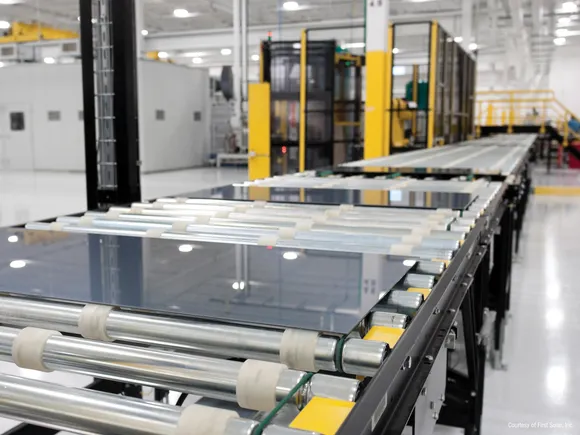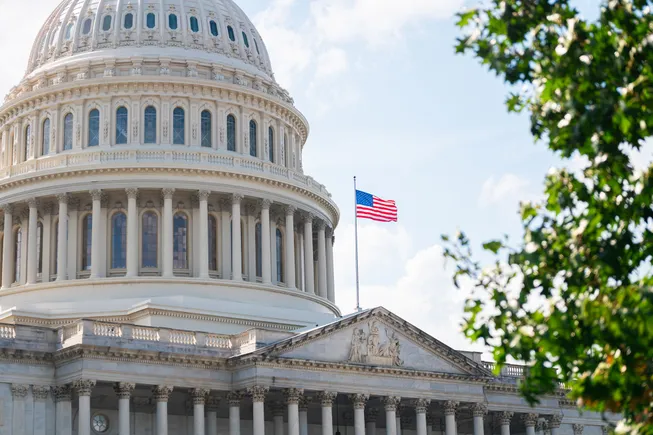The Next Great Nation of Wine Lovers? India, Says the Country’s First Master of Wine
Twenty years ago, Sonal Holland had a feeling that wine could be big business on the subcontinent. That instinct turned out to be wildly accurate. [...] Read More... The post The Next Great Nation of Wine Lovers? India, Says the Country’s First Master of Wine appeared first on Wine Enthusiast.
Sonal Holland, India’s first and only Master of Wine had a feeling that wine would be big business on the subcontinent back when she first entered the wine scene nearly 20 years ago.
“I could see that it was going to grow, and there were no qualified wine professionals in the country,” she tells us in the most recent episode of the Wine Enthusiast Podcast. “I don’t think anyone was sitting there thinking, ‘Oh, let’s have an MW from India,'” she admitted. “But somehow there was a voice inside of me that said, ‘No, this, this can be something real.'”
That instinct turned out to be wildly accurate. Between 2023 and 2027, Euromonitor predicts an annual growth rate of 12% in wine consumption in India. That could translate to an industry worth $700 million by 2030.
What does the average Indian wine drinker gravitate toward? In contrast to a global trend toward white wine, “Indians drink so much red wine,” Holland says. The low- and no-alcohol movements? Not really a thing in India. “We are a spirit-drinking country where alcohol levels are much, much higher,” she offers as explanation. Food pairings aren’t really of interest, either. “People aren’t that fussed about a proper paired meal,” she continues.
Today, wine in India is associated with three things: health, success and sophistication. “That has really helped it popularize among Indians, [specifically an] urban and an aspirational consumer base,” Holland says.
Tune into the below episode to hear more about wine’s meteoric rise in India, and the potentially huge implications for the global wine market.
More Stories About India and Wine
- Exploring the history of wine in India.
- India’s wine culture is changing fast, says writer Henna Bakshi.
- How an aged Riesling catapulted Bakshi to her childhood in India.
- How to pair wine with Indian food and succeed every time.
Episode Transcript
Transcripts are generated using a combination of speech recognition software and human transcribers, and may contain errors. Please check the corresponding audio before quoting.
Rachel Tepper Paley 1:12
Sonal, thanks so much for being here with us today.
Sonal Holland 1:14
Of course, it’s my pleasure. Thank you for having me
Rachel Tepper Paley 1:18
tell us a little bit about your lengthy resume. What are you up to right now? What are your titles?
Sonal Holland 1:23
Okay, well, I’m Sonal Holland. I’m India’s first master of wine, and I became one in 2016 and I am as of yet, India’s only master of wine. I’m the director and founder of Soho wines consulting, which is a consulting company where we provide International where we provide advisory services to international companies looking to enter India. I’m also the founder of Sonal Holland Academy, through which we provide world class Wine and Spirits education to hospitality professionals and enthusiasts. And I’m the founder and chairperson of the India wines and spirits Award, which is India’s largest blind tasting competition of both in market wines and spirits.
Rachel Tepper Paley 2:02
Let’s go a little bit back in time. I want to hear about how you first got into wine. Were you inspired by someone or something? And I’m curious like, how unusual at the time was that for you to be into wine?
Sonal Holland 2:15
We’ll have to go back 18 years and 18 years ago, when I was 33 years old, I was working for a NASDAQ listed fortune 500 company, and a time came when I felt the need to reinvent my career. So I quit my job, and I was looking for options of what else I could do with my life and how I could reinvent my career. Till one day, my British husband, he showed me an article written in the Financial Times, which was written by none other than our favorite, Jancis Robinson. And as I read about Jancis and a career trajectory, it kind of gave me hope that a bright future was possible for wine and wine professionals in India too. Now don’t forget, I’m talking about a time when the industry was very, very nascent and there were no qualified wine professionals in the country. So it was quite a futuristic, futuristic stance on my part to decide to pursue this subject. But one thing was clear, I wanted to build my career on the solid foundation of knowledge and credentials. So and I knew nothing about wine at the time. So and there were no means to study about wine in India, so my option was to fly to London, and I did some of my early stages of education, from the wine and spirits Education Trust up to the point where I finished their flagship course, which is diploma in wines and spirits. And in this journey, I kind of discovered my passion for wine. I kind of fell in love with wine as a subject, and I also realized that I had a flair for communicating about it, so that sort of inspired me to go on and then apply for the master of wine program at the Institute of Masters of Wine. And, you know, at the time when I decided to do this, I think I was kind of way ahead of my time, because wine was still a very nascent and incredibly niche industry, and it was far from gaining any global acknowledgement, both as a wine market and as a wine producer. So I don’t think anyone was sitting there thinking, oh, let’s have an MW from India. But somehow there was a voice inside of me that said, No, this, this can be something real. And I was confident that wine would have a bright future in India. And when that clicked in my head, I just decided to give it a go. And then, you know, 10 years of studying eventually got me the title in 2016
Rachel Tepper Paley 4:38
I’m so curious because, you know, in wine, so many people are raised in families that love wine. I myself did not grow up in a family that love wine. I came to it as an adult, and I’m always so curious to hear other people’s stories, like, what was it about wine that first spoke to you as an adult? I assume. Uh, having not grown up around it.
Sonal Holland 5:02
So for me, it was just the the fact that I saw the opportunity in front of me at the time. I saw it more as a as a strategic decision to enter the wine industry, because it was a very nascent industry. It was untapped. I could see that it was going to grow, and there were no qualified wine professionals in the country. And when I sort of extrapolated all this information, I kind of felt that the future for wine as well as wine professionals in this country, could be very bright. So if I went on to gain some qualifications, I could perhaps be somebody known in industry in India for my wine knowledge or my ability to communicate about it, and it would allow me an opportunity to educate, consult, do events, and pretty much all the activities that I’m pursuing today as a wine professional. It’s just that I foresaw it ahead of its time in India, and I was fortunate enough to, I suppose, be at the right place, right time, doing the right thing.
Rachel Tepper Paley 6:01
So it really was like it started almost like a business decision, but then I imagine you fell in love with it as I went along.
Sonal Holland 6:09
You know, the journey, I kind of fell in love with wine, and my love for wine grew during my educational days, when I traveled through vineyards and the different wine regions of the world. And a lot of this happened while I was studying for my diploma in wines and spirits from the wsct, and thereafter, while I was pursuing the master of wine title. And during this time, and through all these travels, I met hundreds of winemakers, producers to learn about their craft, to discover their passion, and of course, tasting hundreds and 1000s of wines for practice. And that’s when I realized that actually the journey of learning about wine is much more important than actually reaching a goal post, which is earning a title or, you know, earning some accolade like that. So that really shaped me, you know, that really shaped me and made my love and my passion for wine grow. You know, the other thing that actually shaped me also is that I saw the enormous opportunity to apply this knowledge in a country where wine was a promising category, but yet, you know, no one knew much about it, because I’m talking from a country where spirits lead the consumption by far. So I had a very unique voice in a virgin territory, you could say almost. And so I used all my experiences that I could to launch various initiatives, were be they in education or consulting or events or or collaborating with trade fairs, like when Expo and consulting for airlines and whatnot, but just sort of shaping the market and helping boost wines popularity and its appeal by doing initiatives that had an impact, is what has been very exciting and has been part of, you know, what has what has shaped my journey?
Rachel Tepper Paley 7:55
I think that’s so much of like, why we wanted to talk to you, because we’ve been hearing just a lot of news out of India, a country that historically has not been associated with, like a robust wine culture. We’re hearing a lot about, you know, consumption, wine consumption in India on the uptick. Wines made in India. A lot of also very high end Indian restaurants in the United States, specifically New York, that have these beautiful beverage programs that highlight a lot of Indian wines in addition to other, you know, Indian flavors. So, you know, I feel like we have sort of a sense of where India’s wine scene was. Where is it now? What is, how would you describe the wine scene in India in 2025?
Sonal Holland 8:36
so, just to sort of set the background, you know, when I joined this industry two decades ago, wine was largely an elitist drink. It was barely present in retail stores, and most of the fine wines that we talk about were either hand carried to India by wealthy travelers or was available only through luxury hotels. So by and large, it was inaccessible to the general public. The early drinkers of wine in India were typically rich people who either dined at these luxury restaurants or traveled abroad frequently, and they only knew how to flash certain names, like I only drink French wines from Bordeaux or champagne or or chat enough to pap. However, they had no knowledge, or not much knowledge of wines. And like I said earlier, there were no qualified wine professionals in the country in terms of women consumption as well. It was sort of lagging behind. Just a handful of women in the high society would sort of take to wine because they were the ones who had the access and had some level of Western sensibility, or had studied overseas and had experienced the wine culture there. And at the time, there were just a handful of wine producers in the country, you know, like Sula and Grover vineyards, who were sort of making wines, and wines popularity was rising. But today, things are much, much more different. Wine today has proved to become a more mainstream drink. It is seen more as a symbol of health. Health sophistication, success. And if you think about this, this charm of the three words that I just said, the health success and sophistication, you know, wine is wondering that enjoys this trilogy of appeal, and that has really helped it popularize among Indians, urban and an aspirational consumer base. Retail of wines has also taken off. Our retail has gone from being a more primitive picture to a more modern sort of sophisticated, boutique wine led retail outlets, and nearly 70% of the wine consumption in India today is through the retail sector. So only 30% of wine comes from the on premise, on trade sales and the modern Indian wine consumer today is much more educational, far more aspirational. The growth of wine is also being led by women consumers. And mind you, that’s not to be taken lightly, because half of India is is women. I mean, India has 700 and 750 million women. So it’s not a demographic, clearly, to be ignored. And they are taking and they’re embracing wine in a big, big way. And Indian wineries, also today are making, or striving, rather, to make better wines. And they really are dominating consumption. Like six out of 10 bottles in India are consumed. That get consumed are actually Indian wines, and some top names among these are Sula vineyards, Grover vineyards and Fratelli wines. These are the three market leaders, and among many other you know, boutique labels that are also now selling in India.
Rachel Tepper Paley 11:36
Tell me what you’re saying in terms of the quality of the wine. How would you how would you describe it?
Sonal Holland 11:41
I have now been tasting Indian wines every year for the past two decades, and I have seen a dramatic increase in the quality of Indian wines, what started out as something that was very fort ridden. It’s now come to an to a phase where a lot of Indian wines are winning, winning at competitions, winning in blind tastings, both internationally and within home turf. So that’s a very encouraging scene to see. I must also say that a lot of Indian wineries are making wines for the Indian audiences. They recognize the style, the palate of the Indian consumer, and they really want to make wines that are simple to interpret on the palate, that is what represents a vast majority of wine. So they are everyday drinking, and may I dare say, even simple wines, you know. But that works. That works because India is also at a very early stage of their wine drinking journey. However, every winery that is worth its salt also has a premium offering, and today, they are taking the effort to pick grapes from some of the most premium parcels of their land. Leave no expense Unturned or leave no expense spared, and actually make some high quality wines that they’re proud of. And and, you know, claim that these are wines that are age worthy, like I just had an Indian wine which was eight years old, and it was drinking beautifully. It had a lot of energy in it, and it was very encouraging to try that expression. So 80% or 90% of the Indian wines are simple, everyday drinking, coffable wines made for early consumers who are new in their journey and are still trying to understand what wine is, and are probably just having their first few glasses of wine. Okay? Because that’s what the market is. We’re talking about a population of 1.4 billion people. So you can imagine the opportunity for a domestic wine producer. Most, most Indian wine producers don’t really, don’t really, really care about exporting their wines, because they had a big enough market within India. So when they talk about exports, it’s really just for prestige value. It’s just to be able to put on a resume that, oh, our wines are also exported to US, UK, wherever. Yeah, but they recognize that Indian wines probably will remain just a novelty item, you know, just something to pique people’s curiosity, but they have a massive domestic market, and that’s what they’re aiming for. The premium wines are obviously to aim for somebody who’s more evolving in his journey and is now seeking better quality wines, and the risk is that he might actually switch to drinking international wines or imported wines from other countries. So the premium wines made in India then cater to those kind of people, you know, who are seeking a better quality now that they’ve understood it, you know. So that’s a long answer. Sorry to your to your…
Rachel Tepper Paley 14:39
No, it’s really fascinating. I mean, it’s, it’s, I think it’s rare that you get to see not just a nascent industry, but a nascent industry with such growth potential. You know, I don’t think you could say that about lots of other newer wine regions in the world that are also exciting. But it’s not they like they have a consumer base like that available to them.
Sonal Holland 15:02
And I’ll tell you one more very encouraging thing, which is that Indians generally, you know, as a culturally, we are very civilized people. We we are very education focused. We’re all well educated people. English is very mainstream, So language is never a barrier for communicating about wine. So what I mean to say is that when we take to wine also, we do it in a very civilized fashion. I’ve had a lot of wine producers, export managers, come here, host dinners, and often in comparison to travels to other countries, they’ve said to me that I find India a very civilized country to present my wines in, because everyone’s very appreciative. They give the respect. They’re not abusing the drink. They’re not just being casual about it. They’re really keen and understand that this is a drink that we must enjoy and and, you know, they almost over intellectualize it, if I may dare say, but, but the point is that we’re very respectful about wine. I mean, so that, I think, presents a massive opportunity for the world to showcase its wines in India, because India will embrace wine in all its glory. And more.
Rachel Tepper Paley 16:14
you’ve mentioned that you know, the scene is really led like education as a very strong theme is that something that really excites you about what’s happening in India right now.
Sonal Holland 16:25
You know, as a professional, what really excites me is that in the two decades, never before now have I seen so much interest in the Indian wine market. I think it is at an all time high. And every international wine producer and exporter I speak to, they really want a piece of India on their portfolio, and they really want, they’re very keen to export their wines into India, even if it’s in small quantities. They don’t care, but they really want to be able to say that I sell wines in India. So India no longer is like this third world country. It’s a fast emerging market, and it’s on everyone’s sort of bucket list. And that truly excites me because as a consulting business, that presents us enormous and innumerable opportunities to work with these producers and exporters, helping them navigate the Indian market, helping them understand the structure of taxes, which is still, by the way, quite dense and quite complicated. So that that presents a great opportunity for us. The other thing that really thrills me and excites me about the Indian wine scene is that there’s so much thirst for wine knowledge. You know, we have a massive population. I mean, we’re the most populous country in the world, but people are really curious about wine. They want to really learn about it. And I’m really proud that through our academy, but also through our vast social media presence, we now have an opportunity to educate, communicate and inform people about wine and we’re very proud to have a following of over 1.5 billion across various social media platforms, making us among one of the most followed accounts for wine education. And we are constantly finding that people are really curious to learn about wine, understand the etiquette and the culture around it, and they’re constantly asking us questions about this, which is which, which keeps encouraging us to do more, you know, and that that, to me, is the most exciting thing at the moment.
Rachel Tepper Paley 18:20
I’m also curious on your thoughts about India as an emerging market, especially in light of the political turmoil happening in the world right now, specifically about tariffs with the United States. I imagine that the United States, for many producers outside the United States. The United States now presents a less attractive opportunity, but India is a an emerging market. Do you see that conversation happening?
Sonal Holland 18:52
I can speak about this at a regulatory level, but I can also speak about this at a personal level. We’ve been doing a lot of work with Californian wines over the past couple of years, about two to three years, I have to say, from the earlier times when I felt USA overall did not take India as a serious market and did not want to invest in the past three, three years or so, we’ve seen that change, and we’ve seen a lot of interest coming from the Californian wine trade towards Growing the presence of Californian wines in India. And we’ve had the pleasure and the honor of working very closely with the trade and the consulates of USA to help promote through various initiatives, be they trade, tastings, consumer, consumer dinners, and you know, tastings and social media, promotions, education. We’ve actually put, you’d be surprised, but we’ve actually put close to 2000 professionals in India through the California Education Program, which is called the Capstone California, I think, the recent changes in the tariff structures and the and the back and forth, or what’s the word I want to use, but the tug. Four that’s being played around the taxation between America and India. Is rather unfortunate, because just today, I got the news that UK has is almost on the final stages of signing off their trade agreement with India, an economic cooperation trade agreement. And two years ago, Australia became the first country to sign off such a bilateral trade agreement, making the price of Australian wines considerably lower as compared to wines from other countries. So whatever it is, I think if you’re asking me specifically about USA, they should be able to solve their differences and and move forward positively, because I know that the Indian government actually appears to be keen to make such trade agreements come through, as long as they are a win win situation. And this is something India needs, because our taxes on wine and alcohol as a whole are still very high. You know, we are we, it’s we have 150% import tax, and there are many other state level taxes that actually make the price of wine very expensive by the time it reaches the consumer. So all of this needs to needs to soften, it needs to deregulate a little bit so that wine can continue to grow in momentum and its popularity.
Rachel Tepper Paley 21:20
And obviously, I am sure, you know, you see it as a tremendous business opportunity in India.
Sonal Holland 21:26
yes. But you know, business is one thing, and business has been great. I mean, we’ve been growing and we’ve been having lots of fun, but more importantly, you know, it’s, it’s a purpose, right? I always think of it like that, that if I become India’s first master of wine, and I’ve had the privilege of being it’s only for the past nine years, almost a decade now, every success also comes with a responsibility. And my thought and my thinking is always about, how can I make meaningful contributions that serve the industry well, that propel its growth, that actually served its stakeholders in a meaningful way, and so and you know, so my thinking has always been shaped around this. Whatever the opportunity, I kind of ask myself, Is this a favorable move, not just for me, but as an industry as a whole, and is this going to make a meaningful contribution to the industry? And if I find the answer resounding Yes, then I kind of move forward. But the lucky part, also in this whole consideration, is that when as a wine professional, most of our initiatives have been pioneering, only because India is such a new market for wine that most things were lacking. So when we started the academy, it was like the first Academy. We were the first to launch world class wine. And, you know, wine education here, when we started the awards, it was the first wine awards in the country, the first kind of, you know what I mean, like, it just, we’ve just had the great opportunity and the honor of launching a lot of pioneering initiatives. And whilst that all sounds very glamorous and fun, let me tell you, it’s also a lot of hard work. Because when you know the good thing about saying I’m a Pioneer is you get to, you get to, you get the glory, a slice of the glory. But the hard work really is that you have to build a market. And many times we’ve had we’ve found ourselves hitting against the wall and asking ourselves, Oh, I thought there was a gap in the market for this. But is there a market in the gap, and you have to really build a market. And so many times, you know, I faced failures as well. There’s many things I started in the past two decades. Not all of them succeeded, but what’s important is that you keep right, you keep you keep the hustle, and you try different things. And in some places, you you stick the landing, and in some places, you kind of move on.
Rachel Tepper Paley 23:41
What do you think changed in the Indian market to encourage more people to embrace wine? What shifted?
Sonal Holland 23:49
So, firstly, India is a is a thriving economy at the moment, and we are really the fifth, you know, currently India’s world’s fifth largest economy, and we’re on a track to becoming the third largest by the year 2030, you we really are growing as an economy, and premiumization is on the upswing, which means that people are trading up in homes, better clothing, better better travel, you know, everything. And so wine perfectly fits in that entire repertoire of increased spending, and so Indians have really developed an affinity for an aspirational lifestyle in which wine perfectly fits into that narrative. Now there’s a lot of rapid urbanization. People are really sort of moving into the urban cities for a better lifestyle. They’re being continuously exposed to the western lifestyle through their own travel, through pop culture, through the OTT platforms that we are exposed to. So all of this is, you know, further contributing to wine’s popularity. Because if you see on any Ott, if I see any Netflix sort of a show, people are either having a glass of scotch or they’re also. Having a lot of wine. You know, wine is wines become very mainstream, even as an imagery. You know, we’re constantly seeing the image of wine around us, and wine is also making a very steady appearance in Hindi in our Bollywood movies. So wine is being seen very favorably. And this is all shaping consumer choices, particularly among the urban middle class consumers. And you know, not to forget, India has a thriving domestic wine industry as well or and we’re making some amount of wine that is somehow getting distributed properly across all cities. So all of this is kind of making wine a more accessible and a popular drink in India.
Rachel Tepper Paley 25:43
Tell me a little bit about the average Indian consumers palate. Is it similar from mainstream Western drinking habits?
Sonal Holland 25:52
So the Indian consumer palate is very unique, and it doesn’t necessarily align with the Western drinkers palate for for instance, you know, consumers in UK, they prefer to drink white wine, despite it being such a cold country, something that I’ve never understood. But equally, what I do not understand is why Indians drink so much red wine. In India, red wine is favored much, much more by a fine, far margin as compared to white wines. And so nearly 65% of the total consumption of wine today is driven by the consumption of red wine. And why? Because people prefer the taste of red wines. That is generally a positive imagery around red wine. So when people think of wine, they think of red and of course, there are still some perceived health benefits around wine, which are popularly propelled by the media fraternity. Secondly, the Western culture I see is kind of moving towards lighter styles of wines. You know, we like our lines to be light and elegant and not necessarily very heavy. But in India, people still prefer full bodied red wine, so wines made from Cabernet Sauvignon or Shiraz, which are rich, opulent, deep colored they are very, very popular. People generally tend to associate deeper colored wines and more extracted wines with higher quality. While they’re still learning what really means in what quality in wine really means, consumers worldwide are moving towards low alcohol wines, but in India, I’m not seeing any such clear movement. There are sporadic preferences for low alcohol and no alcohol wines. But in general, we are still in very early stages, and people, really in India don’t mind high alcohol and wines, because we are a spirit drinking country where alcohol levels are much, much higher. So even if we are talking about a wine that has 15% alcohol. We’re still seeing this as a low alcohol beverage as compared to spirits. And I would say one more thing could possibly be the whole concept about food and wine pairing. Like in the Western culture, food and wine pairing is a very big deal. Much is written and talked about it. And whilst in India, people are fascinated by the subject, and they they want to, they’re curious about it, and they want to learn about the right pairings and how to pair wine with food. They’re not necessarily focused on food and wine pairing in order to enjoy wine. I think wine is seen more as a social drink and something to have a good conversation around. But people aren’t that fussed about a proper paired meal. In any case, we Indians love our food so much that once the food comes, we forget about everything else, including white so then, so I try and not make a big deal about food and wine in India.
Rachel Tepper Paley 28:35
I wonder if part of that is, you know, it is a big deal in the West, pairing food and wine. I also think that, like the descriptors, the words that you know in mainstream, you know, wine writing, it’s very Western, it’s very ethnocentric. You know, do you find that that is sort of impacting wine education in India? Do you have to tweak things to better fit the Indian consumer, yeah, well,
Sonal Holland 29:03
you’re reminding me of days when I used to study because I remember a lot of the terminologies, wine tasting terms, particularly aromas and flavors. I would have some difficulty with them, because I would often not understand what licorice tasted like, or pear fruits or not, not pear fruits, but clear, no pear drops. I’m sorry, there was some, you know, a word called pear drops, and I could never understand what, what they smelled like. So I had some trouble, even as a student. But in India, I have to say that we’ve tried to make wine more accessible to a larger demographic, and people from all socio economic strata across the country, for example, on social media, you may see that I not only make videos in English, but we’ve also successfully made videos in regional languages like Hindi and Marathi. And the whole idea is to make wine more inclusive, and we speak. To regional languages. So obviously, when we speak in these languages, we use the word, you know, of that language, and so we’re not necessarily using English words at all. And the whole idea is to make wine accessible to a wider audience, to make it more affable, less intimidating, and to make it relatable. The other thing is, I know I just said a minute ago that I do not talk much about food and wine pairing, but in the few videos that we’ve made, for example, if I was talking about something like a pairing of champagne, I would never say pair champagne with caviar, only because caviar is not a mainstream dish eaten on an everyday basis in India. I’m sure it’s not in the UK us either. But my point is, it’s much more relatable there, as opposed to here. A very small section of people have access to caviar. But when we talk about pairing of champagne, we would talk about pairing it with an Indian dish, like pakodas, which are Indian fritters, you know. And that would be a fantastic pairing. Or we could talk about pairing a million red wine with with a dal, a lentil dal makhani, which is a staple in Indian households. So when we talk like that, rather than change words of aromas and flavors and descriptors, if you just kind of integrate wine into an average Indian person’s life through his food and through his language and through his the way he understands it, then that that, to my mind, is the best way to integrate wine into somebody’s life and make it accessible to one and all
Rachel Tepper Paley 31:32
Love that. What do you see on the horizon for the Indian wine scene? Any any trends that are bubbling up?
Sonal Holland 31:41
So there’s lots going on. But apart from everything that I have just mentioned, I would say one segment that’s popularizing rapidly is wine tourism. People are fascinated. See, Indians have always been very well traveled people, and a lot of them, when they go overseas now as well, they want to explore vineyards of Tuscany or vineyards of Bordeaux and champagne, I get a lot of calls from people saying, we’re going to XYZ country. Can you facilitate introductions for us in those countries? But equally, wine tourism in India is growing. So there are lots of vineyards and wineries that are now promoting memorable experiences that go far beyond just tasting. And Maharashtra, where I’m sitting, the state of Maharashtra, where I’m sitting, which is the India’s wine capital, or the wine hub, is actually leading the charge with such immersive tours and events that are, that are, you know, focused around wine tasting. A lot of these wine tasting happens in Nashik. So Nashik is a small town within Maharashtra, which is widely known as the wine capital of India, and that’s where 70% of India’s wineries are. And so a lot of those are happening. One interesting thing that I also wanted to share here is that I have recently unveiled a property called the Holland house, and I’ve kind of made it, tastefully designed it tastefully, built it from scratch, and with the few influences of like a French chateau. So tried to make it look a little bit like a French chateau inspired mansion. But it is. It is in Nashik, and this is going to be aiming at providing 360, degree wine experiences to consumers, visitors, people who will come and stay with us. And so we’ve seen our guests show immense, immense interest in wine experiences. So we are organizing Somalia led wine tastings, high end wine dinners, visits to nearby wineries. All of this, you know, because we’re seeing a cultural shift where wine is now part of a larger experience for consumers. And through the Holland house, we want to try and seamlessly integrate this cultural shift, you know, and make wine accessible to one and all, yeah.
Rachel Tepper Paley 33:46
I’m curious of the wine that is produced in India. What are the varieties? What are the styles? Can you compare them to other regions, or is it a completely unique style of wine?
Sonal Holland 34:00
So you’ll be pleased to know that a lot of the grape varieties that are grown in India are actually the noble varieties. You know, in reds, we’re talking about Cabernet Sauvignon, Shiraz, a little bit of Merlot. There’s a bit of Tempranillo as well some Sangiovese. So all popular, well known grape varieties. Thankfully, we’re not trying to make a Malbec like from Argentina, or trying to make a Carmenere like from Chile. We’re not trying to make an indigenous grape variety. And I genuinely say, Thank God for that, because that would really take us 10 more decades to ever be able to popularize wine from India. So at least we’re sticking with the mainstream varieties in terms of styles. We’re pretty much making it all. Every winery in India makes a sparkling wine, although we use different grape varieties, we tend to make a white, sort of a sparkling wine from Chenin Blanc and a red sparkling wine, which you’re as actually, this is. The traditional method is that, yes, because no. Well, some are doing the Sharma method, and some are claiming to do the traditional method. And I say this cautiously, because I haven’t been inside the wineries to see for sure, but they’re claiming to do traditional methods. And we make, we make some lovely roses. And roses really trending since you asked me earlier. You know, one thing that aligns with the Western culture actually is the massive popularization of Rose wines. We’ve really taken to our roses, and that’s really growing in popularity. Reds remains the most dominant style consumed in India. And like I said earlier, Indians really prefer their red wines to be rich, full bodied, opulent, extracted, deep colored, because that’s associated with higher quality. So the grape varieties most commonly grown in India are Shiraz. Shiraz is the number one in reds and Cabernet Sauvignon, a little bit of Merlot. And in the whites, we have Sauvignon Blanc, we have chelen Blanc. They have a tiny bit of Riesling. And, yeah, that would be about it.
Rachel Tepper Paley 36:07
well it sounds really exciting, is there? Is there anything else that you would want people to know about the Indian wine scene?
Sonal Holland 36:16
What I would like to say about India is that we’re in a very exciting phase right now where consumption of alcohol as a whole is really growing, and wine is also among big beneficiaries of that upward moving trend. Wine is the fastest growing beverage in India today, and it’s increasingly becoming mainstream and is a prominent feature today in people’s homes, at corporate dinners, at Indian weddings, which, by the way, is a massive industry. And India is also very successfully entering into free trade agreements with various countries, starting with Australia, now UK, US, and I’m sure Europe will follow suit. So all of this combined, you know, really will ensure a bigger and a brighter future for wine in the Indian market, for those few people who wish to do business in India, I’ve often felt that people suffer from some past experience syndrome, like I’ve heard people say, Oh, we tried to enter India. We tried to do this business in India 10 years ago, and it didn’t work out. And that’s kind of left a sour taste in our mouth. And I would like to just say that India has changed a lot in the past decade. We’re changing every day. We’re a very fast moving economy. So I would, I would urge people to look at India with a fresh pair of lenses, re evaluate opportunities and start over because, you know, it’s a bus you want to get on. You don’t want to miss the bus. And for the consumers who love wines, I would say, come visit India, not just to drink Indian wine, of course, but just to witness the growing wine culture of in India. But of course, to also enjoy the beautiful tourism, to have our wonderful food and to just witness a revolution that’s taking place in India overall, but also with wine.
Rachel Tepper Paley 38:13
amazing. Well, I’m excited. Thank you so much for chatting with us today. This has really been very interesting.
Sonal Holland 38:18
Thank you. I’ve really had lots of fun. So again, thank you for having me on this show.
The post The Next Great Nation of Wine Lovers? India, Says the Country’s First Master of Wine appeared first on Wine Enthusiast.



























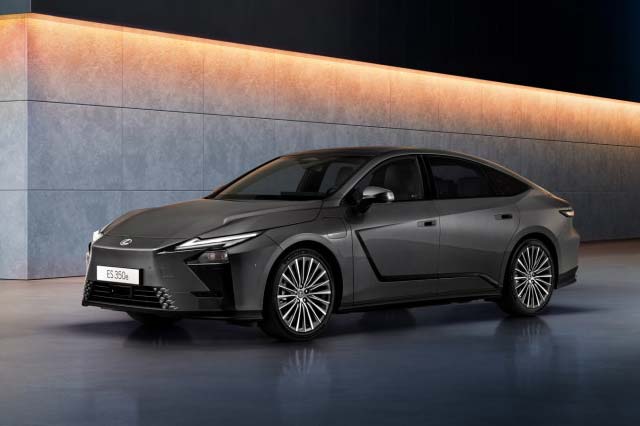










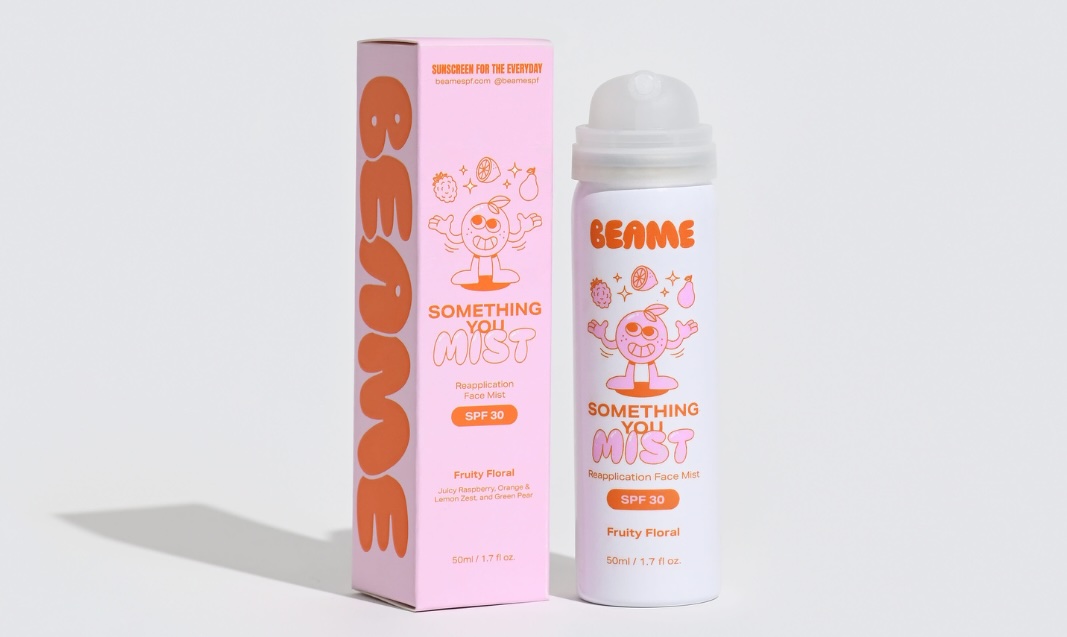































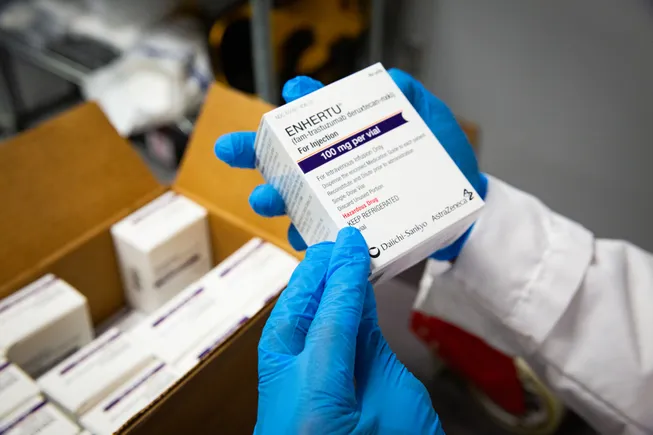
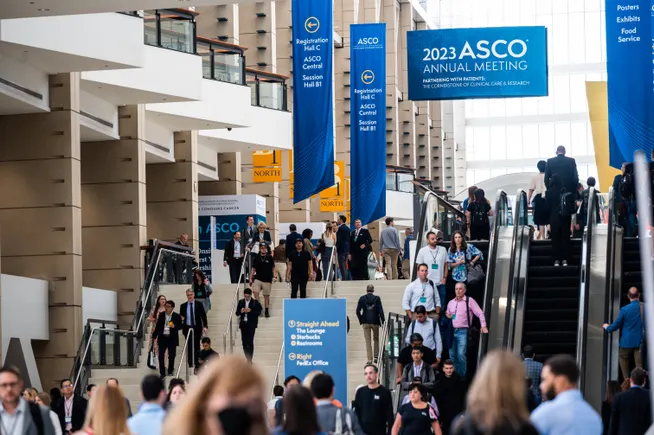
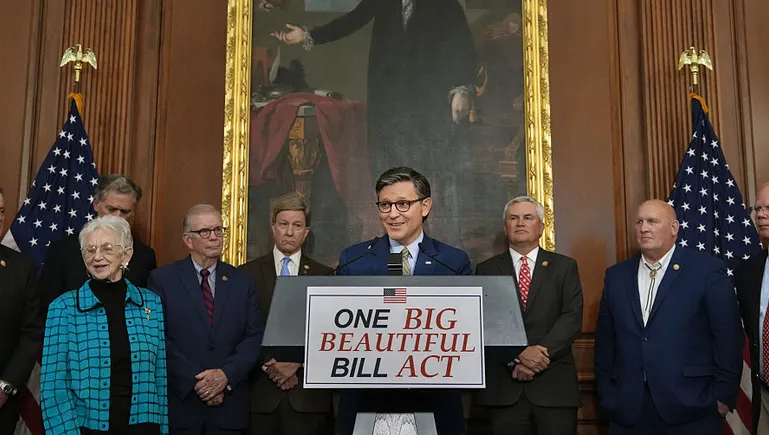













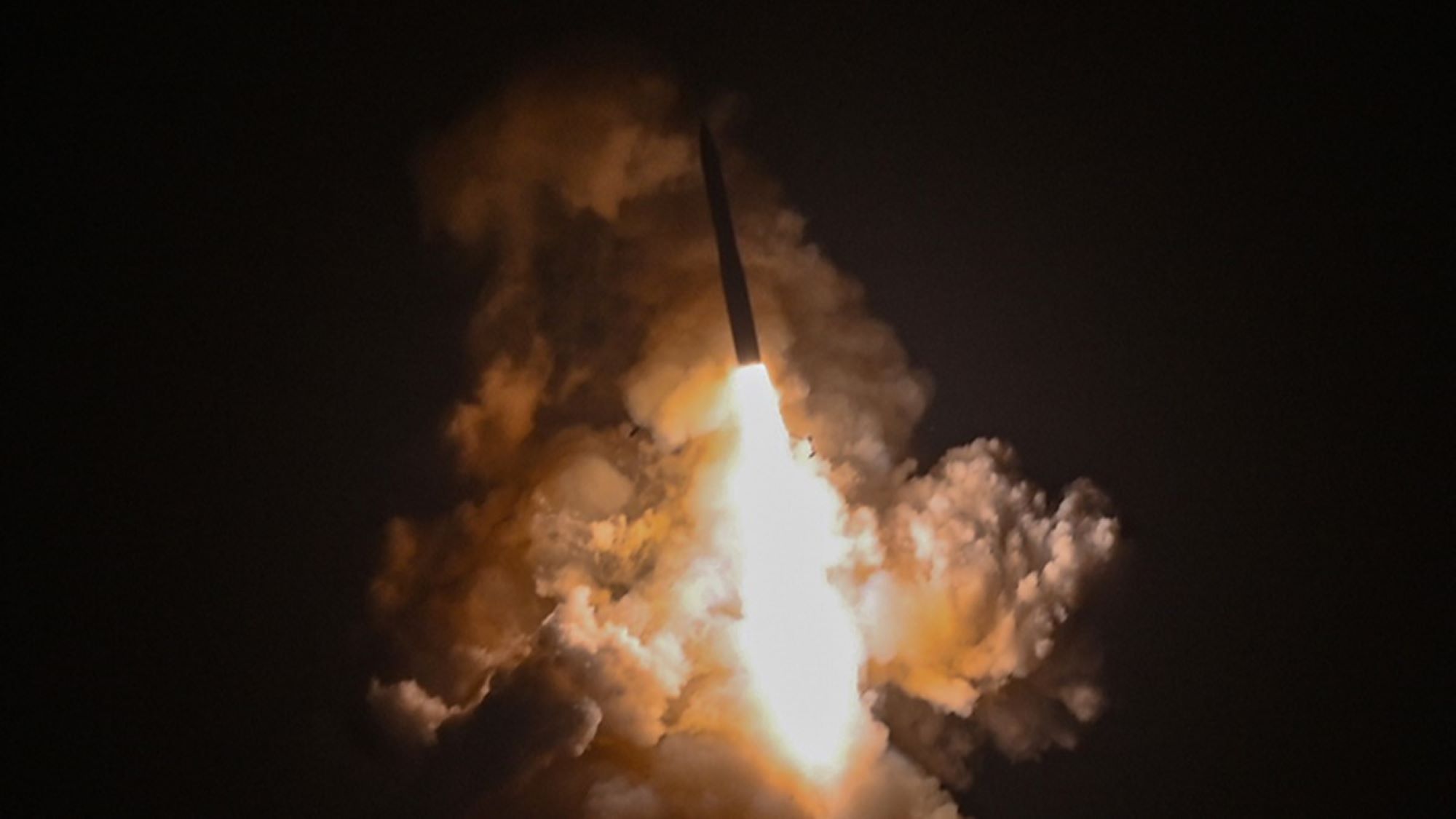


![The F-35’s future: The power and cooling competition that could change everything [Video]](https://breakingdefense.com/wp-content/uploads/sites/3/2024/09/240924_F35_moon_USAF-scaled-e1727200160419.jpg?#)























